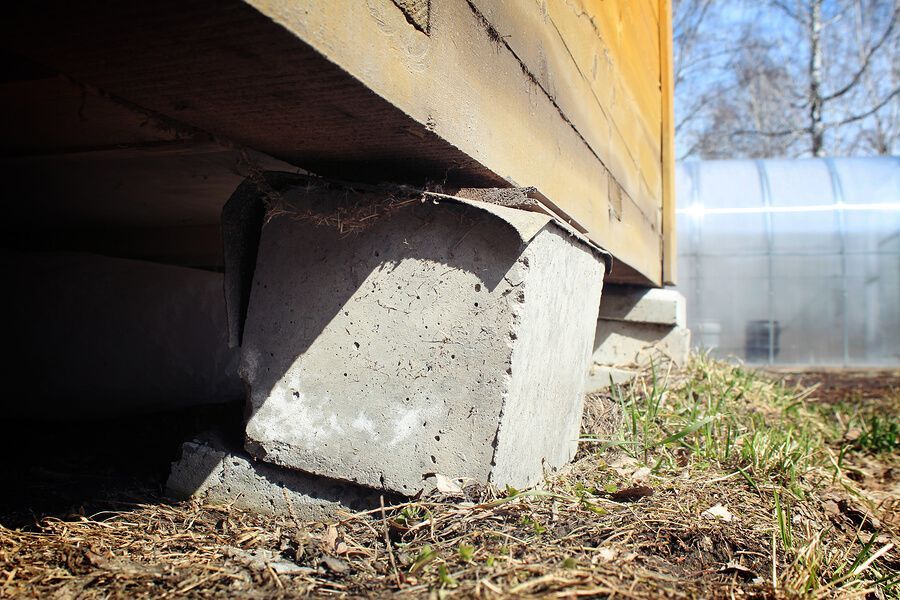Pier And Beam Repair by Oakland Foundation
Most older houses feature what is known as a pier and beam, or post and beam, foundation system. Although more expensive than slab foundations, this type of construction should be highly considered for properties built on hills or in flood-prone areas, where the soil tends to expand and contract significantly. Much like a home elevated on stilts, these foundations are slightly raised from the ground, distinguishing them from slab foundations. When constructing a pier and beam foundation, it's essential to work with professional consultants or structural engineers to ensure the beam is securely driven into the ground using rebar and reinforced concrete until it reaches bedrock for optimal stability. To ensure the joists and floors of the structure receive adequate support, additional beams are strategically installed, spanning from one pier to the next, providing enhanced structural integrity.
Which is Better, Pier and Beam or Slab Foundation Repair?
Repairs to a slab's foundation often include leveling the slab so that further settlement is prevented. Houses that have foundational cracks can have more issues, such as subsidence, as the gaps widen over time. When a building's foundation is fixed, the floors are leveled and any gaps are filled. When your home's foundation has failed, it may create other structural difficulties, so fixing it as soon as possible is essential. Floors with a pier and beam foundation often experience problems including sagging, sloping, and buckling. Pier and beam foundations may be fixed in a variety of ways, depending on the nature of the damage. Fixing a pier and beam structure may include re-shimming the foundation, rebuilding beams and joists, or replacing decaying wood.
Types Of Pier and Beam Foundations
Three of the most typical types of modern pier and beam foundations are described here. The load-bearing capacities of concrete piers vary widely. Concrete piers are used by builders if they can't dig down to a suitable depth of solid soil. Because of their distinctive form, drilled caissons are also referred to as drilled piers. These piers, which may be dug down to bedrock with the use of steel cages or other reinforcements, are used to support more substantial buildings. It is also possible to use cinder blocks and cement to create a pier and beam foundation.
Different Pier and Beam Repair Solutions
Beams and the joists that rest on them might become loose or move. A reshim is a thin piece of wood that is squeezed in between the piers and the beams to fill any gaps. Over time, the piers that hold up your foundation could rot and need to be replaced. Alternatively, you may need additional piers to support and spread your home's weight. Beams and their supporting joists made of wood are vulnerable to fungal and bacterial decay. To replace the rotten beams, the foundation repair crew will have to unplug the healthy beams. Experts will be required to sustain your home while the beams are being repaired.
Advantages of Pier and Beam Repairs
Cost, flood protection, and adaptability are the three main reasons why pier-and-beam foundations are used. The home will be safe from floods since it is raised above the ground on poles. One of the issues with a concrete slab as a foundation is that it is impossible to avoid embedding electrical and plumbing fixtures into it. However, the crawl space under a pier-and-beam structure facilitates maintenance and renovation. Repair costs for pier-and-beam foundations may be lower than those for concrete slabs since it is typically simpler to rebuild just the damaged section of the foundation. Helical piers are often used by foundation contractors to enhance the stability of these foundations, especially in areas with sloping terrain where concrete slabs may not be as effective. A concrete slab foundation isn't the best choice for sloping terrain, but pier-and-beam construction is more flexible.
In conclusion, both pier and beam and slab foundations have their pros and cons, but when it comes to areas with unique soil conditions, flooding risks, or sloping terrain, pier and beam foundations offer more flexibility and ease of repair. Whether you're dealing with sagging floors, damaged beams, or foundation instability, it’s essential to consult with experts to determine the best repair strategy for your home’s foundation. Timely repairs not only prevent further damage but also safeguard the overall structure of your property.
If you need professional assistance with foundation repairs, contact us today.
For more tips on foundation maintenance and repair, explore our blogs to stay informed and proactive about your home’s foundation care.


